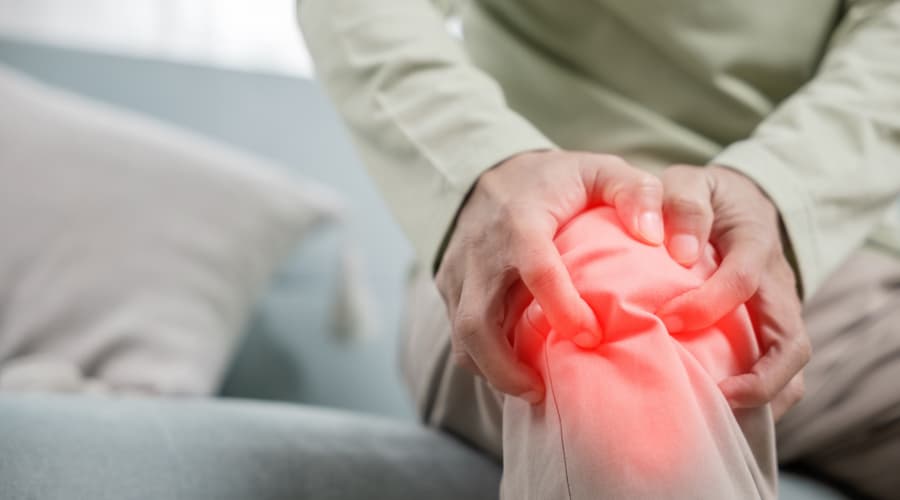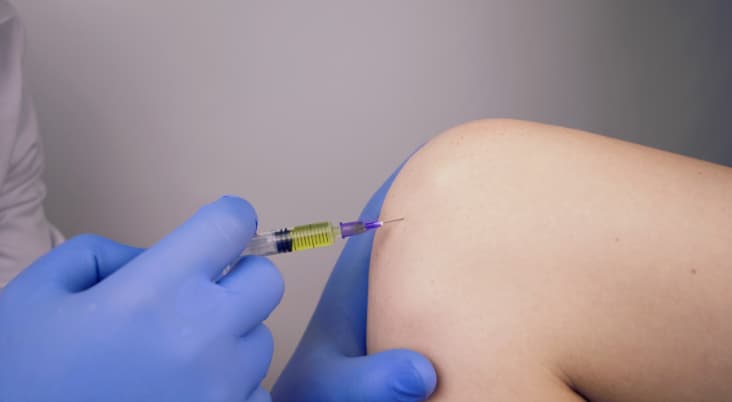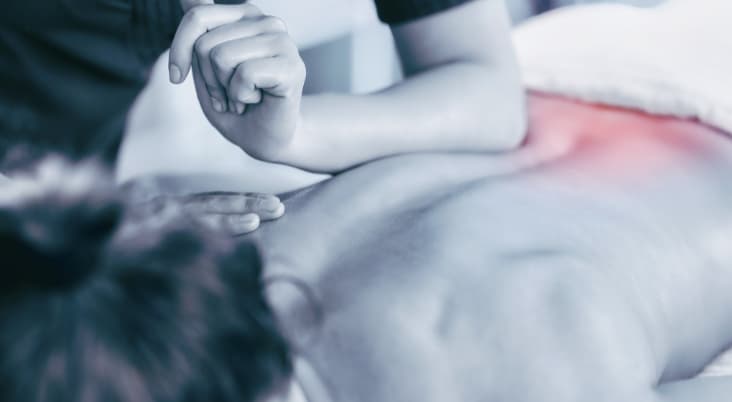Pinched nerves, also known as compressed nerves, can happen anywhere in the body where nerves are found. They can cause pain, tingling and numbness in various body parts. When nerves become pinched in the back, which is often the result of problems within the spine, simple movements can be difficult and painful.
However, the spine isn’t the only place where lower back pain can originate. Sometimes, the pain may be referred from another location in the lower body.
In some cases, these symptoms can be resolved with exercise. What follows are the various causes and symptoms of a pinched nerve in the back and the exercises that can help some people to relieve these.
Symptoms of a Pinched Nerve:
When back pain is caused by a pinched nerve, the symptoms can vary widely. The most obvious symptom is normally an aching pain or feeling of tightness in the lower back.
Pain from a pinched nerve in the back can sometimes be felt in the buttocks, thigh, or leg. This is because a major nerve that travels through the lower back, the sciatic nerve, also travels through these other areas.
Sometimes, when the nerve is pinched in any of these locations, particularly in the buttocks area, pain can be referred upwards into the lower back. The pain caused by compression of the sciatic nerve is referred to as sciatica.
Sciatica Causes:
The causes of sciatica or a pinched nerve can vary widely. The type of treatment necessary to relieve symptoms of a pinched nerve depends greatly on what the cause is. The following causes are some of the more common reasons why someone may be experiencing nerve pain or other symptoms.
Disc Herniation
The spine is composed of many bones known as vertebrae. In between these vertebrae are tissues referred to as intervertebral discs. These discs can sometimes become damaged or ruptured, at which point nearby nerves can become pinched as parts of the disc can overlap over the nerves. This type of disc herniation is the most common cause of sciatica. Herniated discs can be caused by old age, diseases, excessive wear and tear, trauma and many other causes.
Piriformis Syndrome
Within the buttocks is a large muscle known as the piriformis muscle. When this muscle has a spasm or excessively contracts for any reason, it can sometimes lead to pressure on the nearby sciatica nerve. This can cause pain not only in the buttocks, but in the thigh, leg, and lower back as well.
Spinal Stenosis
Spinal stenosis is a condition in which the spaces within the spine become narrow. This can sometimes leave less room for the sciatic nerve that passes through these spaces and it becomes compressed as a result. Stenosis can occur for many reasons such as osteoarthritis, birth defects, tumours, and various diseases.
Spondylolisthesis
Spondylolisthesis is a medical condition in which a vertebra of the spinal column becomes misaligned with the other vertebrae and moves out of its normal position. This can cause a pinched nerve as it can often slide onto the nerve or leave less space in the surrounding area.
Back Exercises:
Neural tension is when a nerve, such as the sciatic nerve, is unable to freely move around or glide through the spinal canal or other areas of the body. When this is caused by piriformis syndrome or a few other conditions, it can sometimes be relieved with movements known as flossing exercises.
The following exercises can help some who are experiencing symptoms in the lower back caused by a pinched nerve.
However, it’s important to speak to a medical practitioner first to determine what the cause of your lower back pain is before starting any exercises. Your chiropractor can advise whether they feel exercises are appropriate for your condition. Do not perform these exercises if they cause you more pain.
Slump Stretch
- Sit straight and with good posture in a chair with your back pressed against the post of the chair.
- Raise and extend one leg straight out so that your toes are faced towards the ceiling while keeping the other foot flat on the floor.
- Simultaneously bring the ankle of your raised leg towards you while also lowering your head towards it.
- While lowering your head, allow your upper back to come off the post of the chair and bend your upper body downwards to create a forward slumping position.
- Hold the previous position for at least 10 seconds. Then, return to sitting straight with proper posture and repeat the steps with the opposite leg.
- Repeat this stretch 5-10 times with each leg.
Knee-to-Chest Stretch
- Lie on the floor on your back with your feet flat, knees bent, and your arms and hands to your sides.
- Using your hands, pull the affected leg toward your chest by grabbing the knee. Hold this position for at least 20 seconds and then return your leg back to its original position. You may also use a towel instead of your hands to gently pull the knee towards you as this may be easier.
- Repeat the previous steps as much as needed.
Lunging Hamstring Stretch
- Stand straight and then take a large step forward with one leg while leaving the other leg in place.
- While keeping your feet flat on the floor, slowly lower your body down so that the knee of the front leg begins to bend. Continue to lower yourself until the front leg’s thigh is horizontal or parallel to the floor. The ankle of the front leg should still be vertical with the foot planted firmly on the floor.
- Put both of your hands on the floor in front of you and extend your body backwards slowly until you feel a stretch in your thigh. You may also begin to feel a stretch in your back as well. Hold this position for at least 10 seconds.
- Return your body to its forward position, then repeat the steps.
Seated Hamstring Stretch
- Sit in a chair with both feet flat on the floor and knees bent.
- Stretch one leg out and raise the toes on that side upwards.
- Lean towards your leg while keeping your spine straight and try to grab your knee.
- While grabbing your knee, hold this position for 10-20 seconds.
- Return slowly to the seated position until you’re sitting upright again.
- Repeat these steps with the other leg with 5 repetitions for each leg.
Mobilising Stretch
- Lie flat on your back and bend your knees while your feet remain flat on the floor.
- Bring your knee up towards your chest, then place your hands behind the top part of your leg.
- Now carefully straighten your knee to where your foot is eventually pointed upwards. Do not lock your knee.
- Hold this position for over 15 seconds and then relax the leg back to a knee-bent position.
- Repeat these motions 5-10 times.
Back Extension
- Lie flat on the floor on your stomach. Keep your hands and forearms pressed against the floor and your elbows bent as if you’re about to push the floor away from you.
- Keep your neck completely straight and begin to arch your back upwards so that your upper body raises off the floor. Your hips and legs should remain flat on the floor while doing this.
- Hold this position for 10 seconds and then return to your original position.
- Repeat this exercise 7 times.
Pelvic Tilt
- Lie down on the floor on your back and bend your knees upwards while your feet are pressed flat on the floor.
- Exhale slowly and gently push your belly down using your stomach muscles so that your back becomes more flattened.
- Relax your muscles and repeat 10 times.
Seated Figure 4
- While seated, cross one leg over the other leg so that the knee of the crossed leg is bent while facing outwards and away from the other leg. This is known as the 4-figure seated position.
- While sitting with your spine straight, put your hands over the bent knee of the crossed leg and gently lean your upper body towards the raised knee. This should be done very slowly and you should not bend your back or spine when moving forward. Your hips are where most of the movement is taking place that allows your upper torso to move forward.
- Hold this position for 15-20 seconds and then return to the upright position.
- Repeat these steps with the other side by crossing the other leg now.
- Repeat on both sides 3-5 times.
Lower Trunk Rotations
- Lie down on your back so that your knees are bent while your feet remain flat with the soles to the floor.
- Move both your knees together simultaneously to the right side. Hold this position for 5-10 seconds.
- Repeat the previous step but now move your knees to the left side while you exhale and contract in your stomach muscles. Hold for another 5-10 seconds.
- Return knees to their original position and repeat these steps up to 10 times on each side.
Simple Leg Extensions
- Put your body on all fours while looking forward instead of down.
- Exhale while contracting your stomach muscles. This will help straighten your back.
- Lift one leg outward and upward as you straighten it behind your body.
- Hold this position for 5-10 seconds.
- Return to the relaxed position on all fours and then repeat these steps with the other leg.
Child’s Pose
- Put yourself on all fours and lean back so that your buttock is resting just above your feet behind you.
- Put your arms forward and in front of you with your hands flat on the floor.
- Lower your head down so that it’s touching the floor.
- Hold this position for 5 seconds.
- Release the stretch by moving your hands back towards you and lifting both your head and upper body up.
- Repeat the process up to 8 times.
Lying Outer Hip Stretch
- Start by lying flat on the floor on your back.
- Rest one leg flat without holding it too stiffly in position. Straight but relaxed is ideal.
- Raise the other leg over the first leg by bending the knee and crossing over it.
- Shoulders should be touching the floor still while doing this and gentle pressure can be applied to the bent knee by slightly pushing down it.
- Hold this position and then repeat with the opposite leg. This stretch can be done with each leg up to 5 times.
Piriformis Advanced Stretch (Pigeon Stretch)
- Begin by sitting with your buttock on your feet and come forward to rest your body on all fours.
- While your hands remain flat on the floor, bring one leg straight back while bringing the other leg across your body on the floor so that the knee is bent. If the leg with the knee bent is your left leg, it should be crossed in the right direction. If it’s the left leg, it should be crossed in the left direction.
- Gently shift your body slightly back so that you’re stretching the leg with its knee bent.
- Hold this stretch for 5 seconds. Then repeat with the other leg.
- Repeat these stretches a total of 5 times for each leg.
Speak to an Expert
In most cases, lower back pain from a pinched nerve will resolve quickly with proper conservative treatment. However, you should always speak to a qualified and experienced chiropractor first who can evaluate you. A skilled chiropractor will normally determine what’s causing your symptoms first so that they can personalise the best treatment plan that will lead to the quickest recovery for you.
Related Articles
- How To Relieve Pain From a Trapped (Pinched) Nerve
- Chiropractor or Osteopath for a Trapped Nerve or Sciatica
- Sciatica – Information & Treatment
- Stay-at-Home Exercises for Your Back
- Will Exercise and Moving About Make Your Chronic Back Problem Worse?




























